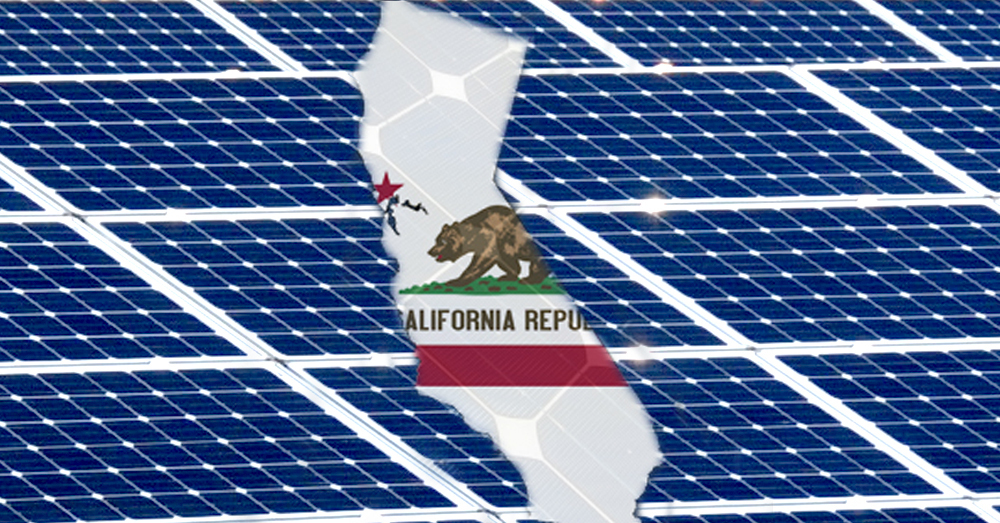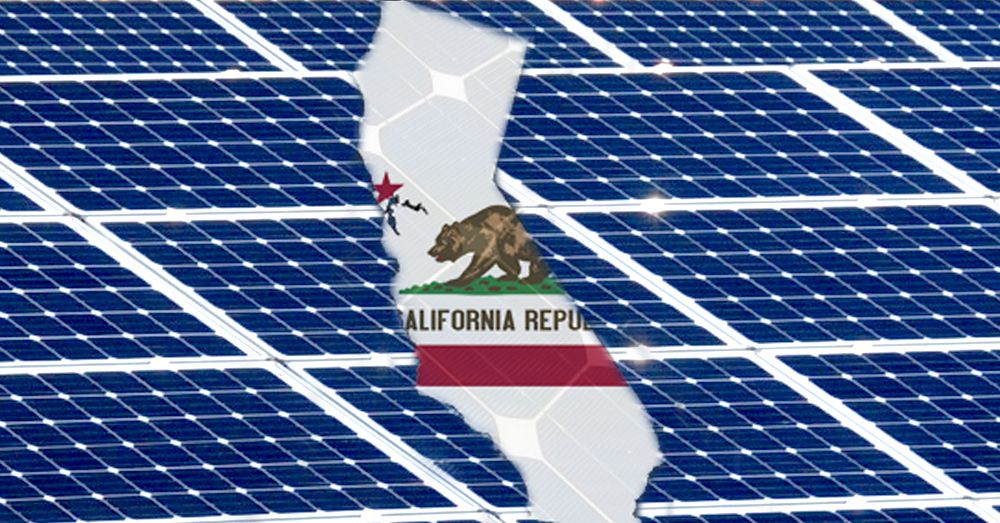
California Breaks Solar Record, Generates Enough Electricity for 6 Million Homes

California has hit a new
solar generation record, thanks to this week’s triple-digit heat wave. SF Gate calculated that on Tuesday, the Golden State’s solar power plants briefly generated enough electricity for more than 6 million homes.
According to
figures from California’s Independent Solar Operators Corporation (ISO) which operates most of the state’s grid, a whopping 8,030 megawatts of large-scale solar power was generated at 1:06 p.m. on July 12, nearly doubling the amount of solar energy produced in mid-2014 and nearly 2,000 megawatts higher than in May 2015.
“This solar production record demonstrates that California is making significant strides forward in connecting low carbon resources to the grid in meeting the state’s goal of reaching 33 percent
renewables by 2020,” ISO President and CEO Steve Berberich said. “California continues to lead the nation in adding clean resources to the system and writing a playbook for operating a low carbon grid.”
The ISO noted that at peak electricity demand on Tuesday at 5:54 p.m., almost 29 percent of electricity needs were met by the state’s vast renewable energy portfolio that includes solar, wind, geothermal, biofuels, small hydro-electricity and energy storage.
Renewables have incredible potential for the state as evidenced this past May 14 and 15, when renewables fulfilled an impressive 54 percent and 56 percent of demand, respectively.
#ISO #solar generation sets new record at 8,030 MW. #CleanEnergy https://t.co/7LiaJCUlhI
— California ISO (@California_ISO) July 14, 2016
When it comes to solar energy, the sun-spoiled state is
head and shoulders above the rest. The Solar Energy Industries Association (SEIA) has consistently ranked California as the nation’s top solar state, and reported in April that California has more solar jobs and installed more megawatts of solar capacity last year than any other U.S. state. Its 13,241 megawatts of cumulative installed solar capacity is capable of powering an estimated 3.32 million homes.
And according to the U.S. Department of Energy, “for both utility-scale solar PV and solar thermal, California has more capacity than the rest of the country combined, with 52 percent and 73 percent of the nation’s total, respectively. “
“Solar power generation is just growing astronomically, and it is less expensive,” Anne Gonzales, an ISO
spokeswoman told the Sacramento Business Journal. Indeed, solar costs and prices are continuing to drop as solar installations soar.
However, there have been some roadblocks. The Ivanpah plant in California’s Mojave Desert—a 392 megawatt concentrated solar power tower and one of the world’s largest solar plants—famously caught on fire in May. Forbes also pointed out that on especially sunny days, “the state’s energy sources (nuclear, gas, renewables) produce more energy than it needs, which has resulted in the grid operator telling solar farms to shut down.” Officials are now looking into connecting with nearby states to share excess energy, Forbes said.
Still, this shining week proves that California is making incredible strides towards its ambitious renewable energy goals of 33 percent by 2020 and 50 percent by 2030.
Last year, on the day Gov. Jerry Brown was sworn in for his fourth term in office, he boasted that California has “the most far-reaching environmental laws of any state and the most integrated policy to deal with climate change of any political jurisdiction in the Western Hemisphere.”
Brown listed a multi-pronged approach to achieving the state’s renewable energy targets, including more distributed power, expanded rooftop solar, micro-grids, an energy imbalance market, battery storage, full integration of information technology and electrical distribution, and millions of electric and low-carbon vehicles.

 233k
233k  41k
41k  Subscribe
Subscribe 
